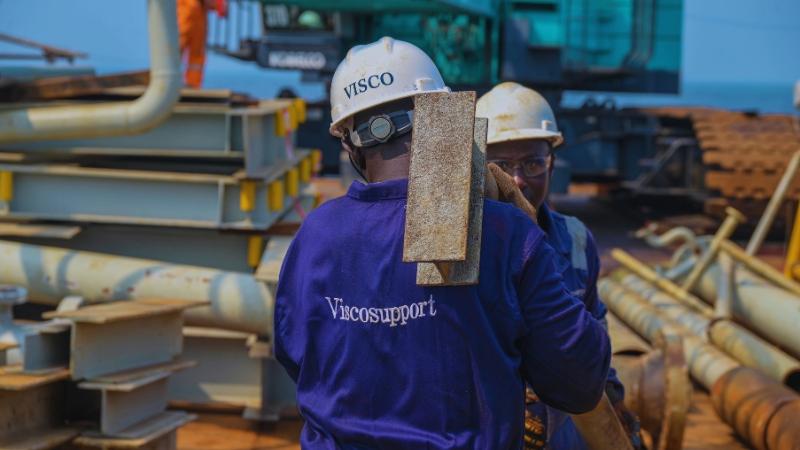Introduction
Design engineering plays a pivotal role in both offshore and onshore projects, shaping the way we build and manage essential infrastructure. Whether it’s oil rigs, wind farms, or urban developments, design engineers are responsible for creating safe, efficient, and sustainable structures. With new technologies and increasing sustainability demands, design engineering is evolving to meet the challenges of today and tomorrow.
Visco Support Production Services, a leader in engineering solutions, provides top-tier design engineering services tailored to offshore and onshore operations. One of its notable projects includes working on the St. Patrick Vessel, a multipurpose barge converted to support offshore operations, showcasing the company’s expertise in maritime engineering and infrastructure development.
What’s Involved in Design Engineering for Offshore and Onshore Projects?
Design engineering encompasses a wide range of tasks, from developing initial concepts to finalizing detailed plans for construction. In both offshore and onshore environments, design engineers collaborate with architects, structural engineers, and contractors to ensure that designs are feasible, safe, and optimized for performance.
Offshore projects, like oil platforms and renewable energy farms, face unique challenges such as harsh weather and corrosion. Onshore projects, such as bridges, roads, and buildings, require considerations for local conditions and sustainability. Engineers must balance technical, environmental, and economic factors to deliver successful projects.
Key Challenges in Offshore and Onshore Design Engineering
Harsh Environmental Conditions (Offshore): Offshore projects must withstand high winds, rough seas, and corrosive saltwater. Engineers must design structures that remain safe and stable under these extreme conditions.
Regulatory Compliance (Onshore): Onshore projects are subject to local building codes and safety regulations. Design engineers must ensure compliance while meeting the needs of the project.
Cost and Time Management: Both sectors require careful management to meet tight deadlines and stay within budget, balancing quality and efficiency.
Recent Developments in Design Engineering
Sustainable Design: As the world focuses on sustainability, engineers are increasingly using eco-friendly materials and energy-efficient technologies. Offshore wind farms and green building certifications are just a few examples.
Advanced Technologies: Offshore projects are adopting dynamic positioning and automation to improve operational efficiency and safety. Onshore projects benefit from smart city technologies and energy-efficient systems.
Innovative Materials: New materials, such as corrosion-resistant alloys for offshore structures, are transforming the way engineers design for durability and longevity.
The Role of Visco Support Production Services in Design Engineering
Visco Support Production Services has been at the forefront of providing cutting-edge engineering solutions for offshore and onshore industries. The company's work on the St. Patrick Vessel highlights its capability in structural modifications, ensuring enhanced operational performance and compliance with industry standards. By integrating innovative materials, sustainability-focused designs, and smart technologies, Visco Support continues to redefine engineering excellence in maritime and land-based projects.
Why Design Engineering Matters
Design engineering is at the core of every successful project:
Safety: Ensures that structures can withstand environmental forces and operate safely.
Efficiency: Optimizes resource use and reduces costs through smart design choices.
Sustainability: Helps create eco-friendly solutions that meet global climate goals.
Innovation: Drives the adoption of new technologies and materials to improve performance and reduce environmental impact.
Quotes
"Design engineers are not just building structures; they’re creating solutions for the future, balancing sustainability with performance," said Engr Edwin Iyk.
Future Outlook
As the world faces growing sustainability demands, design engineering will continue to evolve:
Sustainable Solutions: The focus on renewable energy and energy-efficient designs will grow, particularly in offshore wind and solar projects.
Smart Technologies: Design engineers will integrate more automation, AI, and data-driven tools to improve design accuracy and operational efficiency.
Collaboration Across Sectors: Engineers will increasingly collaborate across disciplines to create multidisciplinary solutions for complex projects.
Conclusion
Design engineering is essential for both offshore and onshore projects, driving innovation, safety, and sustainability. As the industry adapts to new challenges, design engineers will continue to play a central role in shaping the future of infrastructure. Visco Support Production Services, through projects like the St. Patrick Vessel, remains committed to delivering top-quality engineering solutions that meet industry demands and sustainability goals.
What are your thoughts on the future of design engineering? Share your perspectives in the comments below!
Powered by Froala Editor

0 Comments